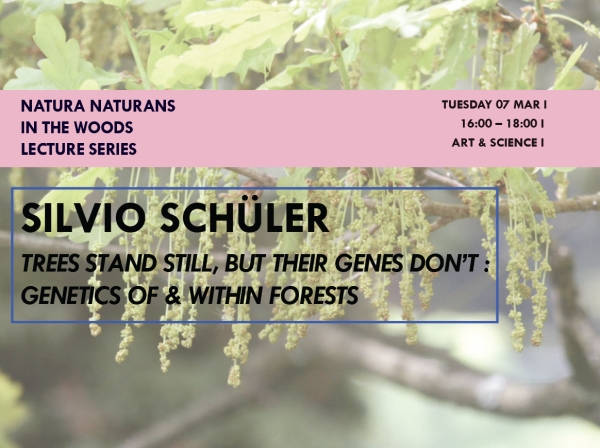Trees are sessile and the longest-living organisms on earth. Within their lifetime they have
to face a wide variation of environmental conditions and changes without having the possibility to move to other more favorable
habitats.
However, during reproduction their pollen and seeds are being dispersed from few meters
up to several hundreds of kilometers. In these phases, trees are able to colonize new areas and to spread their genes over
large landscapes and thus, counteract the human view of peaceful and unchanging ecosystems. Besides spatial movements, tree
populations undergo continuous changes of their genetic composition. Such changes are driven by natural selection, i.e. local
adaptation and random processes. To differentiate between random effects and local adaptations requires long-term field-experiments,
but is urgently required for understanding the consequences of ongoing climate change and for developing strategies to adapt
forests to the uncertain future.
(*After an idea of Silvertown J (2001) Plants stand still, but their genes don't: non-trivial
consequences of the obvious. In: Silvertown J, Antonovics J (eds.) Integrating ecology and evolution in a spatial context.
Blackwell. Oxford. pp. 3-20.)
Silvio Schüler studied biology with a focus in ecology and mathematical biology
at the University of Jena. He did his PhD at the University of Hamburg on the topic of ‘Pollen-mediated gene flow of trees
in the temperate zone’. He has been a researcher at the Institute of Forest genetics at the Thünen Institute. From 2005 until
2016 he directed the department of Provenance research and the national forest seed laboratory at the BFW in Vienna. Since
2017 he is the director of the Forest Growth and Silviculture Institute at the BFW. He coordinates many national and international
research projects such as a cooperation with the University of British Columbia or the INTERREG-Cooperation SUSTREE with Central
European countries.
NATURA NATURANS – IN THE WOODS // Lecture seriesWhich ingredients are
necessary to transform Nature into ‘Natura naturans’–a place wherein bodies strive to enhance their power of activity by forging
alliances with other bodies in their vicinity? (Bennett, J. on Spinoza, 2004)
Presumably, the notion of matter has to
change: instead of postulating inanimate matter which does nothing more than composing the world out of long concatenations
of cause and effect where nothing is supposed to happen (Latour, B. 2010), a “new materialism” installs freedom, movement,
creativity in the very heart of things. What tools might be appropriate to realise this conceptual change from passive to
active matter, to transport various kinds of ingredients into the motley arena of things? Transport and transportation need
mediators that import and export and thus traverse. Metaphor, in facts, means “transport“. And this is a (research)question:
Can metaphors act as mediators for transportation? Like Gaia, mediators can be human and non-human things that invent but
also can betray, that nourish, but also can be mistaken. Transportation (metaphors) can be the craziest and the most certain
– metaphors as messenger create contradiction and foreignness/otherness that may be the route to invention. (Serres, M., 1995)
This module explores the transdisciplinary conditions for transportations and their consequences for invention. We meet
in the woods, this proud and humble emblem of nature. And there is a method: “Research in the wild” aims at exploring actors
and active entities that populate this emblematic site. Point of departure of Research in the Wild: the wood as a polluted,
impure, composite reality, and, secluded research in laboratories that risks paralysis if it refuses to cooperate with research
in the wild. (Callon, M., Rabeharisoa, V., 2003) And there is a caveat: when “first” Nature (and the hegemony of scientific
knowledge that claims to define that “first” nature for its own part) starts to lose its monopoly (see e.g. “multinaturalism”),
it seems to be fair to distrust a “second” Nature: Economy as the universal dialect of a globalised world, and, to avoid believing
that the Economy would supply “the unsurpassable horizon” of investigation and nevertheless respect what informants say about
the troubles with subsistence.
There is an aim: to explore and chart a site-specific transdisciplinary trajectory of
metaphors: a model of the fictional existence of a forest area. A time-based chart that encompasses the multiplication of
goods and bads, the production and following organisational scripts, the exploration of the links between ends and means,
the
risks of reproduction. A chart that “animates”.
See also:
www.dieangewandte.at/artscience



